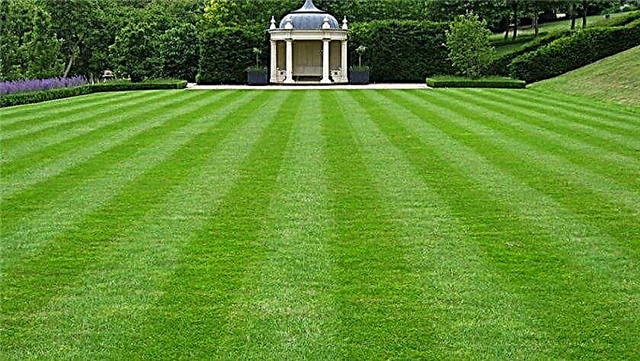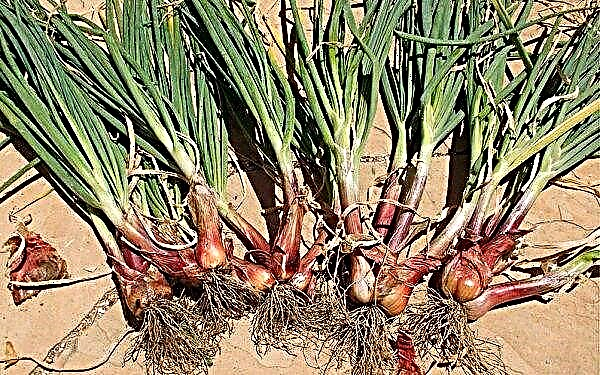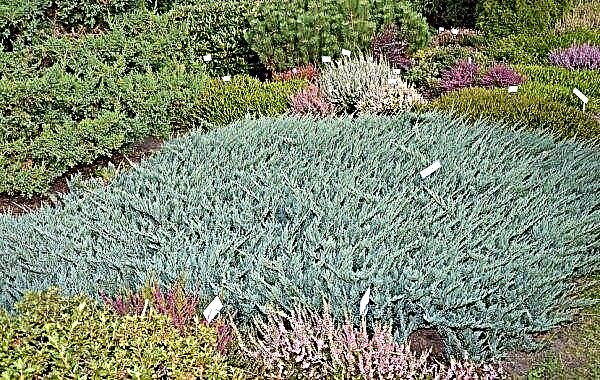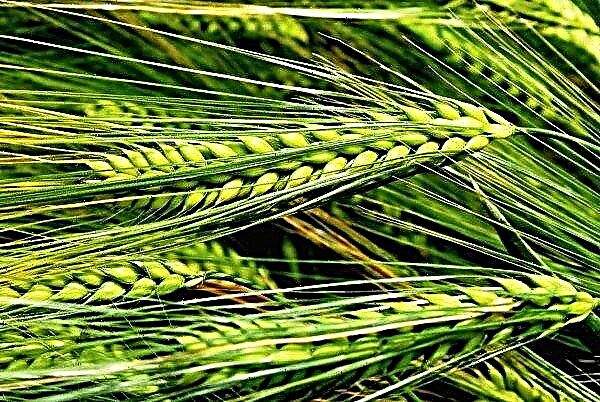A beautiful smooth lawn is the dream of many owners of country houses, and those who have already managed to acquire a green lawn appreciate its aesthetic appeal. A soft natural field is not difficult to grow on soils rich in organic and nutrients. However, not all sites can have such qualities, and owners often have questions about how to grow a lawn on sandy soil and whether this is possible at all: more on this in the article.
Is it possible to plant grass on the sand
To issue a grassy coating on sandy soil is quite realistic. In this case, the site will require more intensive preparation than in the presence of fertile soil, with the addition of soil components.

First of all, it is necessary to draw a diagram of the site and designate on it the territory where the lawn will be settled. Try to immediately take into account all the nuances: whether other plants, for example, bushes or trees, will be planted. This is necessary in order to understand how convenient it will subsequently be to mow the lawn. Under the trees they often plant not lawn grass, but ground cover plants or simply sprinkle the soil with decorative wood chips, which serves as mulch and decoration at the same time.
At the next stage, it will be necessary to prepare the site - remove all the debris on it, uproot old stumps, unnecessary trees and shrubs. To remove an adult tree, first, powerful branches are cut off, then the trunk is cut - so that there is a meter and a half above the surface of the earth. After that, it is dug up from all sides, chopping rhizomes, and uprooting.Did you know? Grasses make up ¼ of all types of vegetation on the planet.

What should be the sand
To plant grass directly in the sand does not make sense. Its upper layer from the site will have to be removed. Now it’s important to choose additives that will make the soil as suitable for planting a lawn as possible.
The necessary components will be:
- loam;
- high peat;
- humus;
- chernozem;
- lake silt or mineral fertilizers.

Each of these elements must be alternately mixed with sand. Thus, it is possible to achieve the most optimal soil composition on which the lawn will grow safely.
What lawn grass to choose for sandy soil
Today, for the design of lawns, they often use ready-made lawn grass, which is sold in rolls. It has a great advantage in that you get a full grass cover as soon as possible. It is laid quite simply, and you do not have to wait until the grass grows, moreover, it will be evenly distributed over the site.
When choosing a roll coating, it is better to choose one so that it consists of grass mixtures. It is most favorable on sandy soil that such flora representatives as bluegrass, red fescue, meadow grass take root and grow. The root system of the lawn should be dense, well developed, with well-visible white roots.Important! A quality lawn roll with shaking should not crumble and tear.

If you want to sow the grass yourself, it is important to choose the right seeds. When choosing varieties, you need to take into account the climate of the terrain, the illuminance of the site, as well as the purpose of the lawn, because it can perform an exclusively decorative function or serve as a platform for sports and children's games.
In the first case, you can choose a herbal mixture, which will include seeds of beefless rump, bluegrass, sheep fescue, clover. Such a lawn will maintain its decorativeness all season with proper care, but walking on it will negatively affect decorativeness. Also note that haircuts should be regular - you must not allow the grass to grow more than 3 cm.
Decorative lawn has its own varieties:
- Ground floor. This look looks neat and even noble due to the fact that a monoculture is used for planting, with the help of which the lawn has a uniform soft cover. Most often, it is sown with meadowgrass, which is resistant to mechanical stress. On such a lawn you can walk for children or have a picnic for adult family members.

- Mauritanian. This species has a special decorative effect, representing a lawn blooming with different colors. For planting, use the seeds of cornflower, bluebell, oriental poppy, large-flowered flax.


Stages of sowing the lawn
You can sow lawn grass in any period, starting from mid-spring to the second half of autumn. It is very important to sow in the complete absence of wind, otherwise the seeds will fly apart, and the final coating will turn out uneven. It is advisable to purchase a special seeder, but it is quite possible to carry out the work manually.
Important! If the lawn is planted at the end of summer or in the fall, nitrogen-containing fertilizers cannot be used, otherwise in the spring the lawn may become yellow.
Sowing a lawn will consist of the following steps:
- The top layer of sand on the site must be removed to a thickness of up to 40 cm. Do not rush to get rid of it - it is poured onto a pile nearby, since sand is useful for creating the following layers.
- Tamp the plot.
- Dig grooves along the edge and lay in them thick branches, logs. Sprinkle sand on top. It will be a kind of drainage system that will ensure the outflow of excess moisture.
- Fill the area with a layer of loam about 10 cm thick, dig it with sand.
- Separately, prepare a soil mixture of peat, humus, sand and loam. All components must be taken in equal proportions. With this mixture fill the area 10-15 cm high.
- Water the site liberally and let it stand for a day.
- Prepare a mixture of black soil and peat (1: 1) and fill it with a patch. At the same time, you can add lake silt. If the last component is difficult to get, you can purchase a complex of mineral fertilizers, for example, COMPO or Agrecol. The latter, by the way, prevents the growth of weed grass.
- Leave the site to rest for 30–40 days.
- Using a rake, loosen the soil and start sowing. If you carry out work without a special seeder, take the seeds in your hand and sow through the plot, trying to distribute them as evenly as possible. Make sure there are no spaces. First you need to walk along the entire site, and then cross across again. Planting material should completely cover the site.
- Sprinkle the planting with a thin layer of sand mixed with chernozem (1: 1), so that it is not thicker than 2 cm.
- Tamp the area lightly using a wide board.
- Abundantly water the landing.
Coating care
About a week after sowing, the first sprouts will begin to appear. Now the lawn needs regular watering. Humidification of the soil is carried out every other day in the evening. Keep in mind that sandy soil will absorb water very quickly, so you can not forget about watering.
After the grass grows by 4–6 cm, it needs to be sheared - only after that you will notice how quickly the division of the sprouts will take place and the lawn will become magnificent. Do not forget about the haircut in the future - this procedure will provide a presentable appearance and a healthy state of lawn grass.Did you know? The tallest grass in the world — giant bamboo belonging to the Cereal family. Its height reaches 46 meters.

Spend it once a week. Pruning can only be done on dry grass and sharp knives. Otherwise, the ends of the greens will be “chewed” and will acquire a rusty hue. During spring and summer, you need to periodically apply complex mineral fertilizers - for example, Kemir. In the fall, top dressing is stopped.
Important! To align the formed depressions, as well as to maintain soil fertility, mulching is carried out. For sandy soil, it is better to choose a composition of sod humus, rotted compost and coarse sand (4: 2: 1). The mulch is evenly distributed in a thin layer throughout the area.
A beautiful green lawn can be grown on a site with sandy soil. Properly selecting the seeds and improving the soil composition, you can achieve an extraordinary decorative coating, which will last a long time while observing the rules of care.














